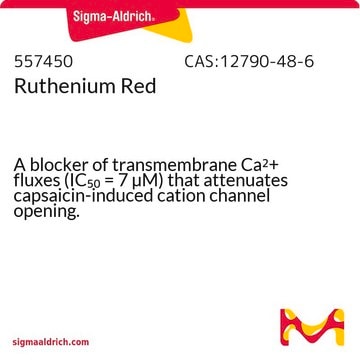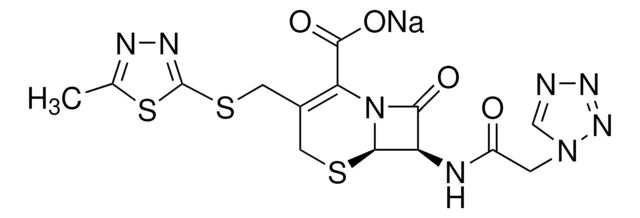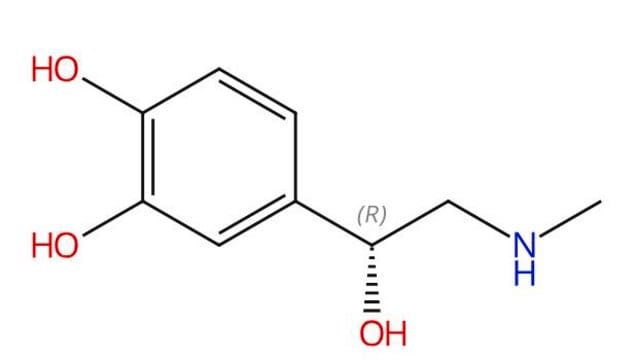E9156
Encainide hydrochloride
≥98% (HPLC), powder
Synonym(s):
(+/-)-4-Methoxy-N-[2-[2-(1-methyl-2-piperidinyl)ethyl]phenyl]benzamide hydrochloride, MJ-9067
About This Item
Recommended Products
assay
≥98% (HPLC)
form
powder
solubility
H2O: >25 mg/mL
originator
Bristol-Myers Squibb
storage temp.
2-8°C
SMILES string
Cl.COc1ccc(cc1)C(=O)Nc2ccccc2CCC3CCCCN3C
InChI
1S/C22H28N2O2.ClH/c1-24-16-6-5-8-19(24)13-10-17-7-3-4-9-21(17)23-22(25)18-11-14-20(26-2)15-12-18;/h3-4,7,9,11-12,14-15,19H,5-6,8,10,13,16H2,1-2H3,(H,23,25);1H
InChI key
OJIIZIWOLTYOBS-UHFFFAOYSA-N
Gene Information
human ... SCN10A(6336) , SCN11A(11280) , SCN1A(6323) , SCN2A(6326) , SCN3A(6328) , SCN4A(6329) , SCN5A(6331) , SCN7A(6332) , SCN8A(6334) , SCN9A(6335)
Biochem/physiol Actions
Features and Benefits
signalword
Danger
hcodes
Hazard Classifications
Acute Tox. 3 Oral - Eye Irrit. 2 - Skin Irrit. 2 - STOT SE 3
target_organs
Respiratory system
Storage Class
6.1C - Combustible acute toxic Cat.3 / toxic compounds or compounds which causing chronic effects
wgk_germany
WGK 3
flash_point_f
Not applicable
flash_point_c
Not applicable
ppe
Eyeshields, Faceshields, Gloves, type P2 (EN 143) respirator cartridges
Choose from one of the most recent versions:
Certificates of Analysis (COA)
Don't see the Right Version?
If you require a particular version, you can look up a specific certificate by the Lot or Batch number.
Already Own This Product?
Find documentation for the products that you have recently purchased in the Document Library.
Articles
Voltage-gated sodium channels are present in most excitable cell membranes and play an important role in generating action potentials.
Active Filters
Our team of scientists has experience in all areas of research including Life Science, Material Science, Chemical Synthesis, Chromatography, Analytical and many others.
Contact Technical Service









